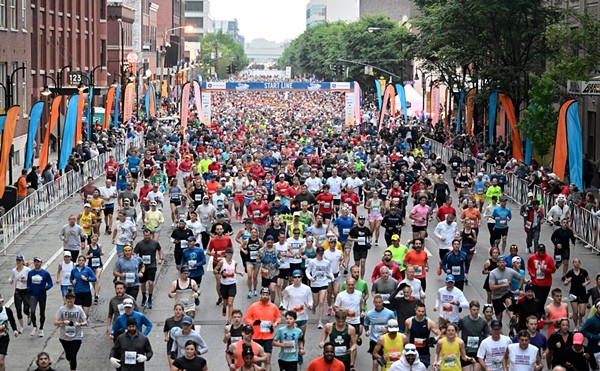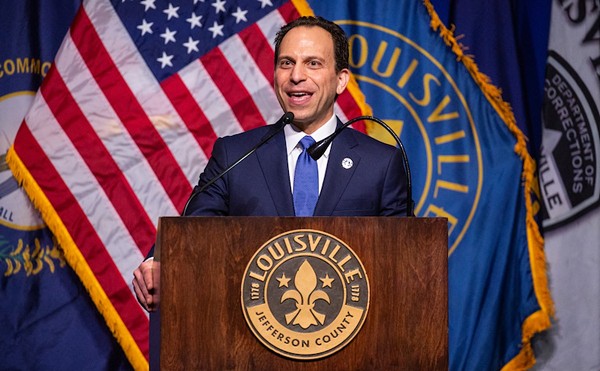I don’t get downtown much anymore. I may go to pay a parking ticket — or get yet another. But I’m learning. Now I rent the maximum time allowed because, well, I’m still one of those slow children at play. When I return early, I’m happy to surrender my extra minutes because I believe in the gift of change. A little change can make a big difference.
I never venture downtown unconcerned with traffic and parking. I try to avoid congestion, pollution, road rage and other complications of our public transit deficit disorder. How much does this impairment blur our image? How many more bright, young, urban professionals will refuse to move to our progressive, innovative, visionary city when they learn they must sacrifice their freedom not to drive? Inquiring minds want to know, because image is critical.
Sometimes voices from the past remind us how mindlessly we created toxic problems and how little our thinking has changed.Those voices reached me via a rebroadcast of “Louisville: 30 Years of Change,” a KET documentary produced in 2002. A segment on 1960s sprawl fueled by The Mall, Oxmoor and the Showcase Cinemas multiplex alarmingly illustrates how suburbs distress the cities they surround. “For shopping and entertainment,” says the narrator, “downtown was becoming irrelevant.” WHAS broadcast pioneer Milton Metz follows up, “It all goes back to the cars and parking. I think the city was shortsighted in not providing free or almost-free parking” to compete with “endless acres of free parking” in the suburbs.
Let’s face the fact that paid parking is a Hummer-sized bummer. But before we consider the costs and benefits of free, streetside parking, ponder the next mega-dose of box-office poison. Coming soon: more urban impacts of the Ohio River Bridges Project. Years of construction will constipate traffic as interstate traffic is diverted onto the downtown grid. Concrete barriers will impose inevitable costs. It’s time to consider whether we can afford not to remove those pesky meters and the psychological barrier they represent.
It might mitigate the symbolism of bridge tolls. Like street-parking-for-rent, tolls fly in the face of our hospitable image. Imagine charging your out-of-town Derby guests a user fee to enter your residence. Imagine what you would say after they subsidize our economy and return home to receive a toll by mail. “Thanks for your business and I’m sorry for your hangover.” (More on the trouble with tolling in a future column.)
How we define progress is on my mind because WHAS-11 recently spun the demolition of the Baer Fabrics building as “not the only sign of progress” on the bridges project, which reporter Joe Arnold once described as “an economic necessity.” I view the Baer demo as a disturbing metaphor — akin to the devastation of other historic urban structures to create parking lots in the 1950s and ’60s. Now luminaries of The New York Times think the “induced demand” of our expanding interstates may exacerbate, not relieve, downtown congestion. For the love of Louisville, I hope they are wrong.
And I hope I’m wrong that our “city of parks” is becoming a city surrounded by office parks, a notion supported by a recent C-J story on the glut of vacant offices downtown. Civic-hearted sages like the late philanthropist Owsley Brown and the recently departed Grady Clay, an urban planner, worried about sprawl. “Sprawling growth fries a doughnut of affluence around a hole of poverty,” according to a 2004 Preservation magazine story titled “One Bridge Too Many?” Clay said, “A bridge is a force, not just an object ... Anytime you condense that kind of energy, it’ll raise hell.”
The magazine also cast a consensus among preservationists: “The only way to stop sprawl from swallowing the countryside is to convince policymakers, developers, and the public to reinvest in older, existing communities.”
The proliferation of abandoned and vacant urban properties underscores the need.
In 2004, Sustain magazine addressed the challenge of rethinking “housing, transportation, employment, education” for an increasingly elderly and diverse population. Ron Crouch of the U of L Urban Studies Institute wrote, “Do we realize how many persons are going to be sleeping on their couches, in dirty clothes, and using chamber pots because they cannot” navigate stairs? He decried suburban McMansions and asked, “Do we want all those baby boomers driving 30 miles to the grocery store in 20 years when they start entering their 80s? Better yet, will they want that reality?”
Years later, the boom continues.





